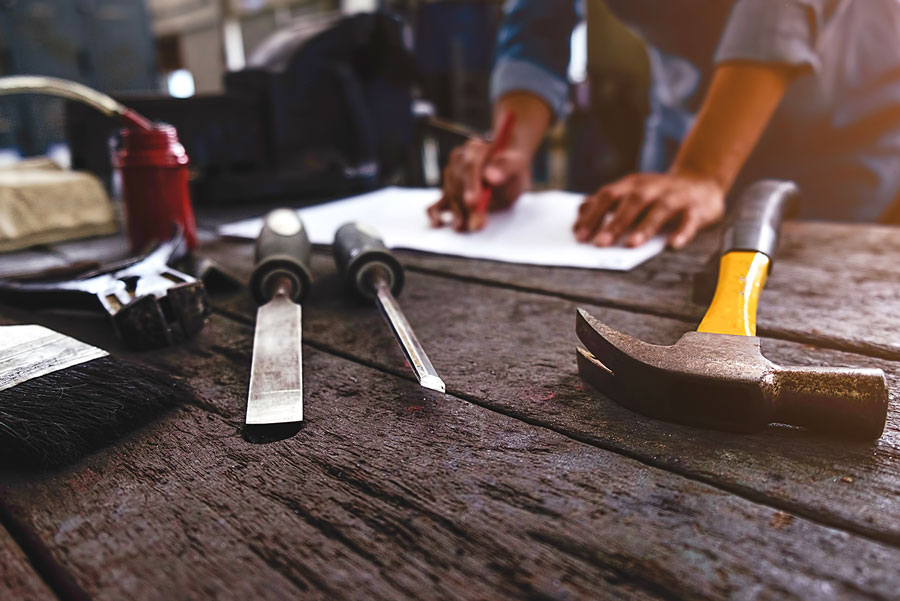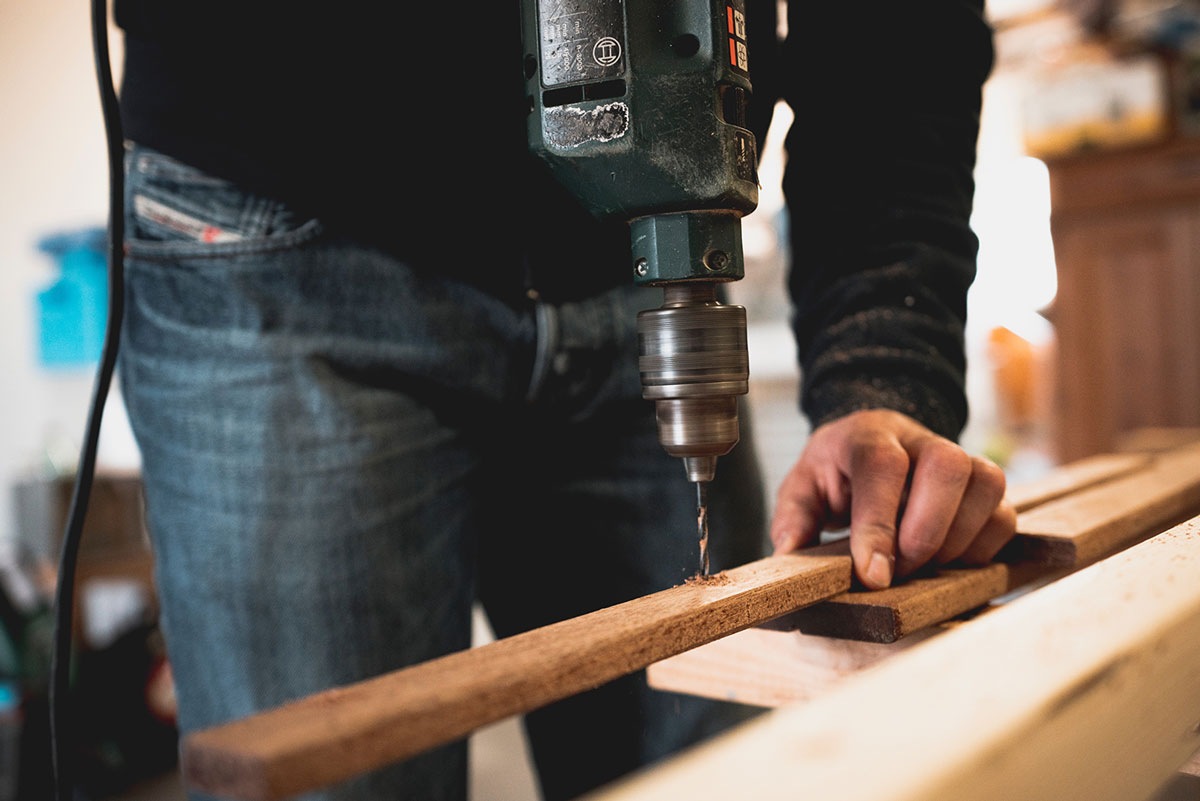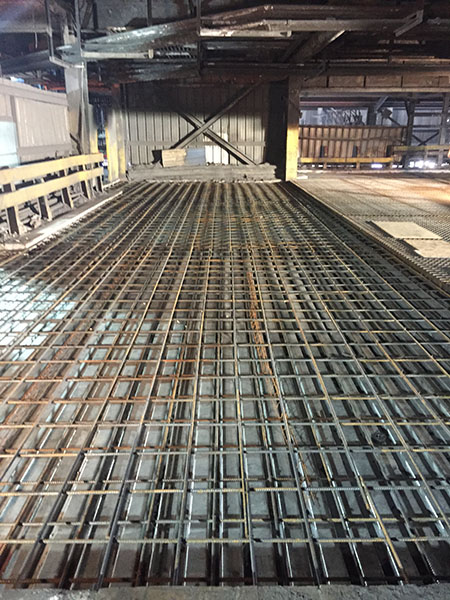
Foundation Repair Myth: Straightening Walls Without Excavation.
This is the largest myth in foundation repair, and it is not even close. There are entire franchises dedicated to this myth. Dedicated to advertising, and selling you on this “revolutionary” product.
There are multiple types of products on the market that claim they can straighten a bowed wall from the inside, but two are the most popular. One system uses a two-plate system connected by a threaded rod. One plate is on the inside of your wall, the other plate is approximately 7’ on the outside. The premise is that by tightening the nut on the interior plate, the pressure will straighten the wall over time. The other system is an internally fastened steel beam that usually has a nut and spring system at the top. The theory behind this is that by keeping the nut tight, the spring keeps constant pressure on the wall. Of course, they say over time the wall will straighten.
The marketing behind these systems is excellent. Who wouldn’t want a cheaper, easy, quick, non-evasive method to repair their foundation? The problem is that these “repairs” do nothing for what is actually causing your basement wall to bow in. They do not address the pressure. Even worse, they are incapable of actually straightening the wall.
There are two main types of pressure that causes a basement wall to move inward, soil and water. These pressures have different ways they affect your foundation. They also act together in expansive soils to create immense pressure.
When this style of system is installed, the pressure remains. They will try to sell you on that when the soil dries, and shrinks, the system will be there to push the wall back out. In reality, the soil never goes back to its original position. It cannot go back on its own, and cannot be forced back.
As soil gets wet and expands, it puts force on your foundation wall, this force begins to crack and move the basement wall. Once a basement wall moves inward, it forms a memory. It has a new location to call home and wants to stay there. This is in part due to the movement of the mortar, and the weight of the home. When the soil begins to dry out, it creates a small void along the basement wall. This new void is then filled up by the settling of the exterior soil, or other incompressible materials that will fall in. Now that this void is full, the next time the soil expands, it moves the wall inward even more. Once it dries and creates a new void the cycle repeats itself. Therefore, every time there is an expansion and contraction cycle in the soil, there is new particles that are filling the void where the wall used to be. The best example of this is when a basement wall begins to bow in, the grade along the wall on the outside begins to drop. This is why we see patios, the soil, and landscaping settled along a bowed wall, creating incorrect slope and adding more water to an already present problem.
What type of force do you think it will take to push all of these particles back to their original location? I won’t make this question rhetorical. The answer is more than the block wall can stand. Even if the block wall could stand the pressure, the home structure above could not.
If we dive into the physics of the process of straightening a bowed wall from the inside, we will quickly see that it does not work. Soils that typically are present when a basement wall bows inward are clay type soils. These can be silty clay, sandy clay, or any combination. On average these soils weigh between 90 and 125 pounds per cubic foot. For our example we will use 100 pounds for easy calculation.
These types of soils have what they call an angle of fracture, or the angle from the pressure point that the soil cohesiveness will break free. The angle for clay soils is 20 to 30 degrees. Using these angles, and calculations, we find that a 6’ deep bowed wall has 654 pounds of soil per lineal foot of wall to “push back” in order to straighten the wall. Most of these false panaceas claim to put 1000 pounds of force on your wall. If we use their claimed pressure, you will need one of these items every 1 ½ ‘. Most foundation repair companies only install them on 4’ to 8’ centers. They aren’t even installing them correctly for their own claimed pressure rating. And just when you thought it was bad, there is more. We have not accounted for block weight, incompressible materials, or the weight of the water that is trapped in the soil.
Now is when it gets good. The other calculation that is paramount to the proof that these are a scam. The angle of fracture is based on the direction of the pressure point. The above calculations were based on the assumption of pushing straight up on the soil. The reality is that these systems put pressure on the wall that is directed directly back into the soil. These systems cannot work to repair your bowed wall. At best they are stabilization, and at worst, are a complete waste of money.
There is no way to straighten a basement wall without excavation. Without first removing the pressure, and the settled incompressible materials, there is no repair that can be attempted. What these systems are is interior stabilization strategies. They are designed to hold a wall where it is, nothing more. They are advertised to give you a false hope of repair.
It amazes me that there are entire franchises that only install one type of system. How many restaurants do you think would be successful if they only sold 1 item? Can you imagine going in with your family, getting a menu, and the only thing on it was a turkey club sandwich? No different types of bread, no choices on toppings, and no substitutions. It sounds ridiculous, but this is exactly what some foundation repair contractors are. They do not sell solutions, they sell products.
A true repair of a basement wall takes someone with options. Someone who understands the pros and cons of exterior versus interior, and can articulate them to you. Repairing a bowed basement wall requires someone that has the knowledge of all types of pressure on the wall, and can provide options to mitigate it.
continue reading
Related Posts
Concrete Reinforcement: Choosing between wire, rebar, and fiber.




